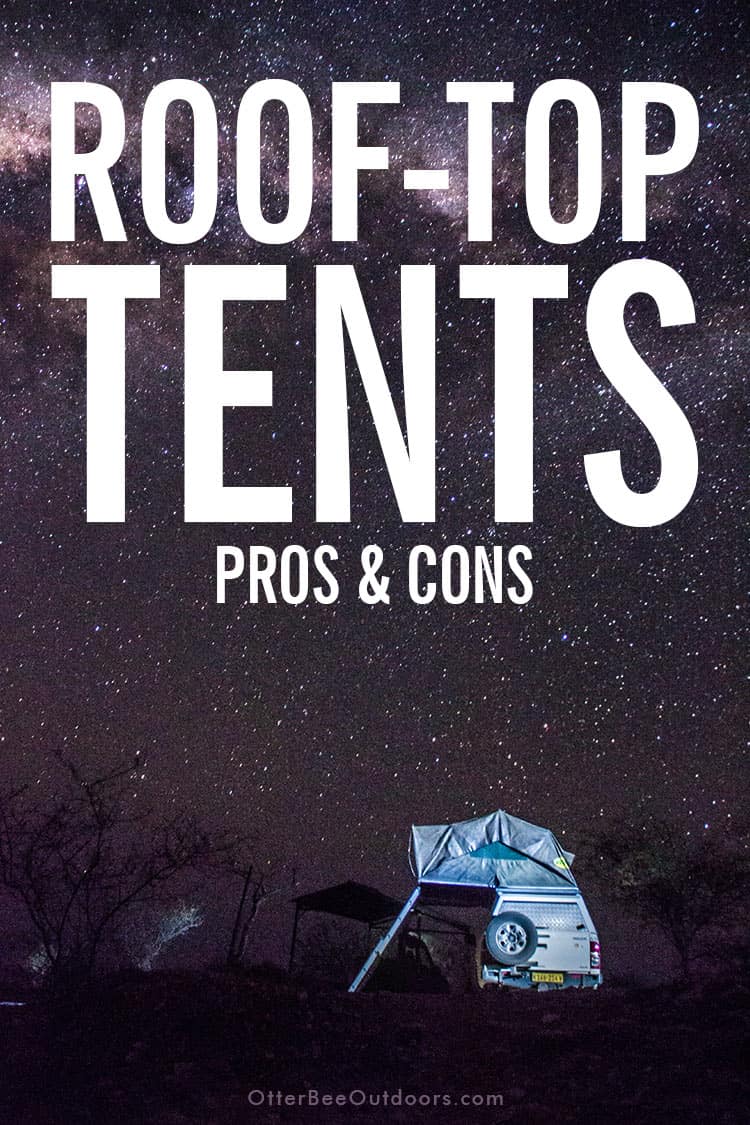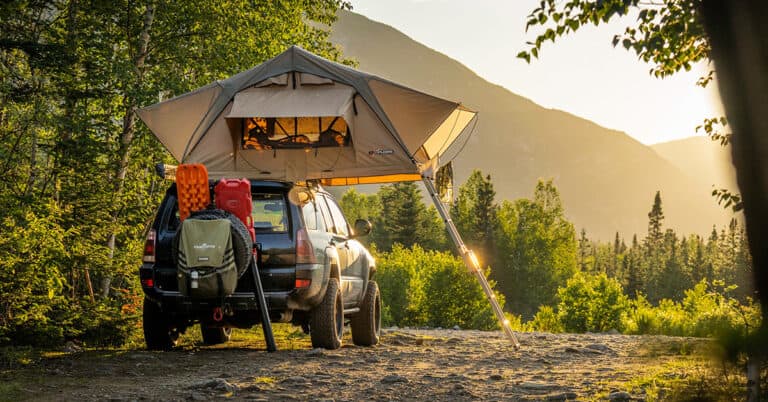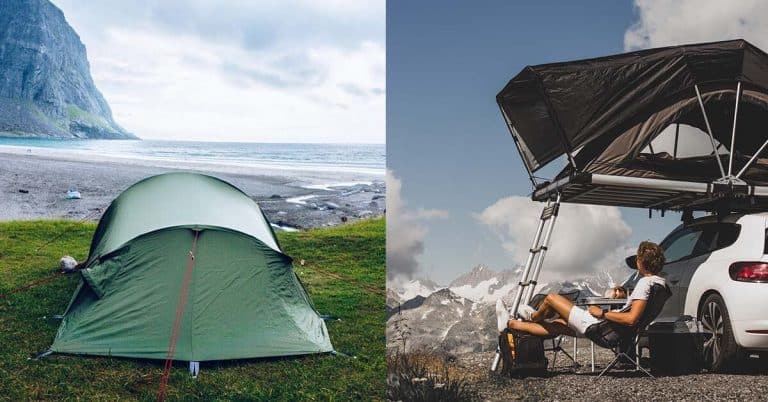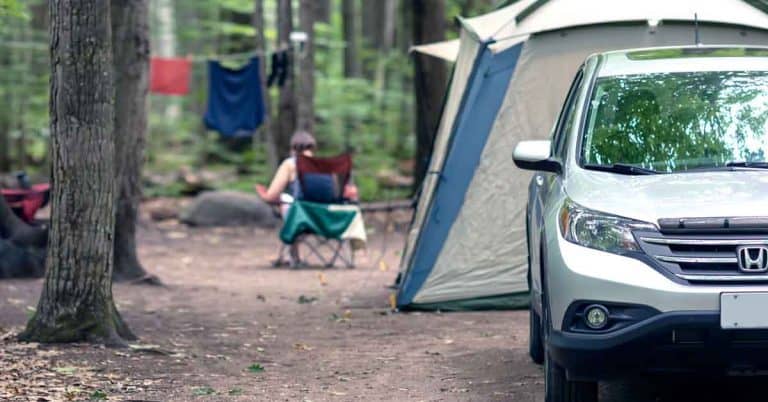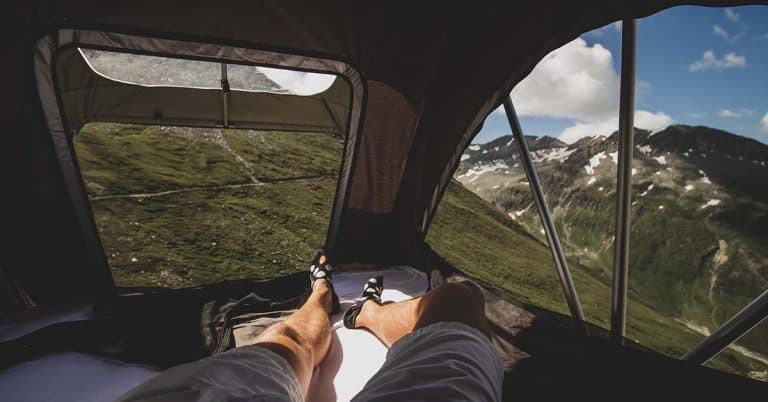Disclosure: I am compensated for purchases made through some links on this site. Click for details.
Have you seen roof-top tents? If you have, you’re probably in one of two boats… Or is that tents? Me, I was ready to buy. My wife… She thinks they’re silly. Which way do you lean?
If you’re interested in buying, you’ll want to know the pros and cons of rooftop tents. If you want to talk your husband out of a silly camping tent, you’ll want to read the cons.
Oh! And there are soft-shell roof-top tents and hard-shell roof-top tents. Both will be covered so you can explore the advantage and disadvantages of each.
If this article doesn’t answer all your roof-top tent questions. Check out the roof-top tent questions and answers page.
Related Content:
- How To Choose A Roof-Top Tent
- How Do You Level A Roof-Top Tent?
- Why Switch From A Soft Shell To Hard Shell Roof-Top Tent
- Roof-Top Tents vs Ground Tents
What Are the Benefits of a Roof-Top Tent?
The benefits of a good rooftop tent are its comfort features, durability, safety, and ease of use while offering greater mobility and affordability over camper trailers, travel trailers, and RVs. Whether on an overland adventure, at a campground, or in a parking lot, if you can park there, you can camp.
For many campers and overlanders often, the advantages of roof-top tents tend to outweigh any disadvantages. Let’s look at the roof-top tent benefits to see if one is right for your next camping adventure.
Safety
Are rooftop tents safe? They can be far safer than a traditional ground tent. Wildlife is less of a threat when you’re sleeping up high in a rooftop tent. Snakes, crocodiles, bears, wolves, and so many more will be denied access to your outdoor penthouse.
Keeps Some Insects Out of Your Tent
Creepy crawly insects like scorpions, ants, and spiders will find it harder to climb into your tent. I hate feeling like something’s crawling around in my tent or in my sleeping bag.
If you need them, we’ve covered ways to keep insects out of your tent.
Durable Materials
Rooftop tents are 3-season or 4-season tents constructed from a coated denier canvas made to withstand the elements. This material is waterproof as well as UV and mold-resistant.
The denier canvas and a heavy-duty aluminum support structure make for a durable tent that will provide decades of use with the proper care.
Comfort
Rooftop tents have mesh windows and door for ventilation and typically come with a high-density foam mattress for a comfy night’s sleep. Some even have a sky view window in the roof for extra light during the day and a relaxing view of the stars at night. You can even mount solar panels on the roof of most hard-shell tents.
Expandability
Need more room? Living space can be added to some soft-shell rooftop tents by adding annexes and awnings can be used with either a soft or hard-shell tent for added shade.
Easy Setup and Breakdown
Setting up your rooftop tent and breaking it down couldn’t be easier or quicker and it only takes one person about 10 minutes. If you have an annex, it doesn’t take long to set up either.
When breaking camp, you don’t even have to make up your bed. The foam mattress folds up inside. Breaking camp for the day? Leave your bedding inside too. It’ll save storage space in your vehicle.
The ease of setup and breakdown is a great advantage for those who will be camping in a new location every day.
Camp Anywhere
Rocky, mucky, or other unfavorable ground isn’t an issue like it is with a ground tent. It doesn’t matter if you’re on an overland adventure, at a campground, or in the Walmart parking lot, if you’ve found a place to park, you’ve found a place to set up your rooftop tent.
Mobility
You’re far less encumbered with a rooftop tent. They allow you to go places you could only dream of with trailer tents, camper trailers, travel trailers, and RVs especially if you have an off-road 4×4.
Fit on Most Vehicles
Roof-top tents and 4x4s are a great marriage but they fit on almost any vehicle. There’s even a Skycamp Mini Roof-Top Tent from iKamper that fits on compact cars.
Truck, family sedan, SUV, compact… You can mount them on trailers too. All you need is a suitable roof rack to mount them to. Roof-top tents are heavier than your average ground tent so aftermarket roof racks like those from Yakima and Thule may be needed to accommodate the extra weight.
Wondering if the roof or roof rack of your vehicle can support the weight of a roof-top tent? The manufacturer’s safety requirements for cars make them structurally suitable for handling the weight of most roof-top tents though you should be sure to check your manufacturer’s recommendations.
Weathering the Storms
There are soft-shell rooftop tents and hard-shell rooftop tents. The hard-shells offer more protection than a soft-shell tent in bad weather though both versions are waterproof and made from sturdier, heavier materials than most ground tents.
Roof-top tents are great in inclement weather. Not only are they waterproof, they’re capable of handling strong winds and with a roof-top tent, you don’t have to worry about water from heavy downpours pooling up and swamping your tent. Snowbanks are less of a problem too but please don’t camp in a blizzard.
Seek shelter during severe storms. They should be avoided as they should in all camping situations.
The View
You have your very own mobile tree house with great views that you can’t get with ground tents. Whether the view is of the mountains, lake, river ocean, or elevation over the forest floor, you’ll love the view from higher up.
Cheaper than Alternatives
Are you looking to move up from a ground tent to something better? Roof-top tents are cheaper than camper trailers, travel trailers, and RVs. They provide mobility and some useful upgrades at a fraction of the cost.
For added storage, efficiency, and comfort, add some drawer systems, refrigerator and cargo slides, and an electric cooler to your vehicle.
More Room in Your Vehicle
When the tent is mounted on your roof, you’ll have more space inside your vehicle for your family, friends, and essential camping gear. You can even keep your sleeping bags and other bedding in most rooftop tents.
One thing to remember when you bring that extra stuff is how to keep your camping gear safe from theft. You may want to pack up your gear if you drive away from the campsite for the day. You’ll have to break down the roof-top tent for sure. You can’t drive with it expanded on top.
Roof-Top Tent Recommendations
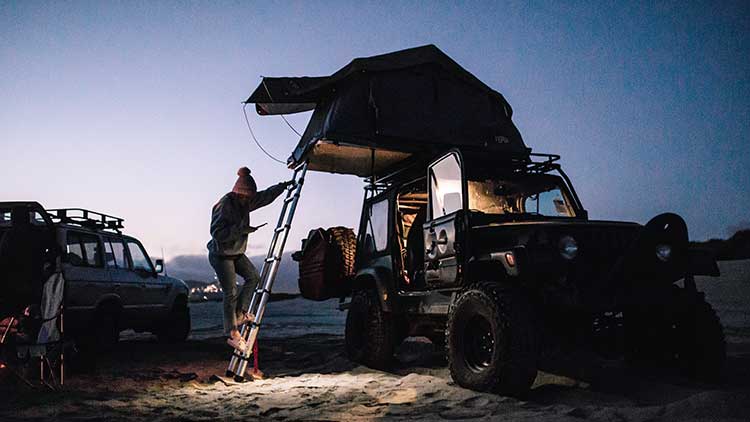
Roofnest and Thule Tepui are some of the best roof-top tent brands. These hard-shell and soft-shell tents are some of the best of their kind.
- Roofnest Sparrow Adventure (hard shell box)
- Roofnest Falcon (hard shell)
- Thule Tepui Ruggedized Autana 3 + Annex (soft shell)
What Are the Disadvantages of a Roof-Top Tent?
There are fewer cons than pros though the disadvantages may deter you from buying a roof-top tent. Other than price there is one disadvantage that is a huge deal for my family. It might be for you too. I’ll get to that in a bit.
Price
Price is the biggest deterring factor for many campers. The tent itself can run from $1000 to $4000. If you need a roof rack, you’ll be out a few hundred more.
It’s still cheaper than other tent alternatives like travel trailers and RVs.
Mounting the Tent
Getting a roof-top tent on and off the roof of your vehicle will take no less than two people. These tents can weigh 100 – 200 lbs.
Removing and remounting between use can be a pain. If you camp often, you might want to leave it on your vehicle during camping season.
Roof-Bound
You’ll only be able to camp where you can drive. You can’t take the tent off your vehicle and backpack to your camping spot. This is less of a problem with a 4×4 but the use of a roof-top tent with the family sedan may limit possibilities.
Camp Breakdown for Excursions
You can’t drive while the tent is set up, so you’ll have to breakdown the tent every time you want to go on an excursion away from camp. This may cause you to lose your camping spot, especially if you take all your gear with you, and leaving limited gear at a campsite increases the possibility of theft.
Related Content: Keep Your Gear Safe From Theft While Camping
Nighttime Bathroom Trips
A groggy climb down a ladder and back up in the middle of the night for a bathroom trip is a little more work than a ground tent but really not too bad.
Gas Mileage
The wind resistance of roof-top tents has a negative effect on fuel economy. This can add up if you keep your tent on your vehicle throughout the camping season.
Change in Center of Gravity
If only slightly, the increased height of mounting a roof-top tent can negatively affect a vehicle’s center of gravity thus reducing trail performance and road handling.
Wind
Though they’re designed to handle stronger winds, you’ll feel the roof-top tent rocking around a bit. The winds catch your vehicle and tent.
You might want to avoid camping in windy locations if the rocking motion bothers you… Or it might help you with falling asleep.
Single Bed
How many people will be camping with you?
Roof-top tents typically come with a bed. One bed. This is fine when camping alone or for couples but families or groups of friends might find the accommodations less than desirable.
Can’t Stand Up In
Some ground tents are tall enough to stand up in. Not so for roof-top tents. An annex, yes, if you have one but not the roof-top penthouse.
Difficulties with Small Children and Dogs
The high mounting position makes camping with little children and dogs difficult. Carrying a small child or dog up and down the ladder is precarious and these tents lack safety features at the tent door to prevent falls.
We have an infant and will not be camping in a roof-top tent until she’s older.
Clearance Height
The clearance height of my vehicle with a roof-top tent makes it too tall for parking garages and other structures like my garage at home. Be sure you know your height restrictions. You don’t want to damage your tent, vehicle, or permanent structure.
Mold and Mildew
The fabrics of roof-top tents are mold and mildew-resistant but folding up a roof-top tent after camping in rainy or snowy conditions can cause mold and mildew to form virtually destroying the tent. The tent must be opened back up and dried. This can be inconvenient if there is a lack of space to unfold the tent at home or if you live in an area of the country with an inhospitable climate or other weather conditions that prevent you from drying the tent.
Conclusion
For me, the pros of roof-top tents far outweigh the cons. Well, for the long term they do. For the short term, I’ll be sticking to camping on the ground for the safety of my infant daughter. When she gets older, she’ll probably enjoy climbing the ladder to her penthouse.
Is a roof-top tent a good fit for your next camping trip?
